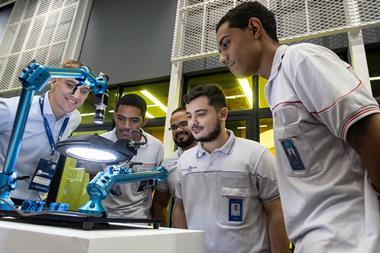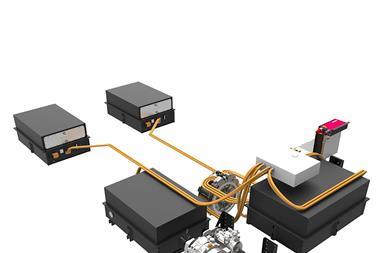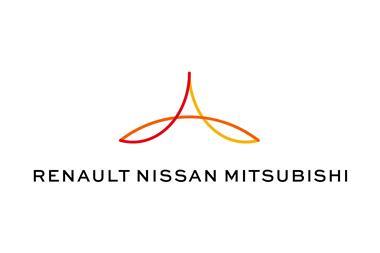
 Schenck RoTec balancing technologies are at the vanguard of the battle to reduce noise and vibration in automotive components, writes Stephan Roisin, MPS business unit manager, Dürr Brasil Ltda. Div. Schenck RoTec
Schenck RoTec balancing technologies are at the vanguard of the battle to reduce noise and vibration in automotive components, writes Stephan Roisin, MPS business unit manager, Dürr Brasil Ltda. Div. Schenck RoTec
In the automotive industry, balancing and diagnosis technology is an opportunity to improve component performance quality. The launch of each new model is accompanied by growing consumer pressure for improvements in both quality and performance. In particular, the car-buying public is no longer prepared to trade vibration and noise for speed and performance. As a result, balance has become a vital ingredient in the smooth and silent operation of modern cars, with components such as motors, crankshafts and wheels all receiving attention.
Unbalance is effectively the enemy of automotive performance. The term itself comes from balance, which in turn comes from scales. A set of scales is in equilibrium when the same weight exists on both sides of the scale beam. The mass distribution of a rotor about its rotational axis can be viewed in the same way, and an uneven distribution of mass is what gives us unbalance. It causes centrifugal force, vibration and noise during rotation. These forces grow stronger and have a markedly negative impact on comfort at higher speeds.
Vibrations can also reduce the frictional grip of screwed and clamped joints and loosen components. Moreover, they can degrade electrical switches, while pipes and cables can fracture at their joins. Finally, unbalance can have a substantially adverse impact on a machine’s operating safety margin and risk injury to its operators and damage to the equipment itself.
Removing unbalance forces
Schenck has been closely associated with balancing for more than a century. Generally acknowledged throughout the automotive industry as a market leader in balancing technology, Schenck RoTec enjoys a market share of over 35% worldwide, even higher in South America. Its machines are used around the world in such diverse sectors as automotive, electronics, aerospace and turbine manufacturing, and its mission is to improve the quality and performance of rotating and oscillating components and assemblies.
The forces caused by unbalance, namely disruptive vibration and noise, are removed by balancing. This involves improving the mass distribution of a rotor so that a smaller centrifugal force acts on its bearings. In addition, the type of unbalance must also be taken into account during balancing. It is possible to sort unbalance into a number of types according to its impact. Apart from the shape and task of a rotor, the type of unbalance affects the location of the correction plane and the choice of balancing tolerance.
With a rotating system such as a rotor or a crankshaft, three types of unbalance present challenges for automotive engineers: static unbalance, couple unbalance and dynamic unbalance. In the automotive industry there are numerous applications where balance is important, and two of the most crucial are electric motors and crankshafts.
Balance & electric motors
It might come as a surprise to learn that electric motors are already widely used in many types of vehicle. From window motors to auxiliary heaters, up to 60-80 electric motors of various sizes are used in a normally equipped, medium-range vehicle. They handle not only comfort functions, but, increasingly, safety functions such as servo-assisted steering and driver assistance systems. These motors are very reliable and efficient, and they perform their role largely unnoticed in the background.
For a motor to perform in the background means, in a technical sense, that it must produce no vibrations in order to eliminate both noises and resonances. It is only through a sophisticated production strategy that a manufacturer can deliver on its promise of delivering high-quality electric motors that perform unobtrusively. The conclusion is that balancing is the decisive step in the production cycle of an electric motor in delivering the required quality.
The process of reducing noise and vibration levels in electric motors is not only about comfort, it is also about delivering a motor that will function unobtrusively in a modern car and deliver many years of reliable service. Even with the most modern of today’s production techniques, rotor balancing is, and will remain, the most important step in the production process for the delivery of quality and safety. This is because it is only with a precision-balanced armature that it is possible to deliver the comfort and safety standards that automotive manufacturers consistently demand from components.
An overview of solutions to unbalance
The traditional method of curing unbalance in rotors is to add material. However, there are also processes that create balance by removing material that are more economical and reliable. In addition to drilling, which is suitable for alternators and many other rotors, milling has also proven to be a viable solution.
Correcting the polar unbalance during laminate assembly with a profile-milling cutter acts directly in the calculated angle position. Slot milling is also a variable process for making polar or component corrections. It is used where precision is of the essence, and it brings with it the benefit of having the least effect on the electrical properties of a rotor.

When it comes to automatic balancing on medium-throughput runs, all of the necessary functions will take place automatically and offer the benefit of certain process reliability. The only input required from the operator is to move the workpiece between workstations. The measurement of the unbalance, the indexing to the correction angle, and the correction itself, are all carried out accurately and repeatedly by machine. This excludes operator error.
Higher-volume runs, however, call for maximum productivity and will require the addition of an automated handling system. This creates highly flexible units that work perfectly with all automation and feed devices – from conveyor belts to palettes. When large batch numbers are produced, up to six workstations can work with one automatic transfer machine for workpiece handling.
It is possible to fully automate functions such as balancing in one or two planes, correction by milling or drilling small or large rotors, without having to compromise on the quality of the balancing outcome. Fully automatic solutions can deliver extremely short cycle times of less than seven seconds while maintaining maximum precision.
Keeping balance with downsizing
It is not only electric motors that require balancing skills. Today’s trend in fuel-efficient engine production is toward downsizing. The incorporation of technologies such as variable valve control or supercharging enable a small, basic power unit to match the performance level of its significantly larger predecessor.
Moreover, each engine, with whatever changes to its design or specification, can slot into several performance segments and have, accordingly, a broader range of application than would have been the case in the past. Parallel to this development, the market has witnessed a sharp rise in the number of vehicles kitted out with small two- and three-cylinder engines in the so-called BRIC nations of Brazil, Russia, India and China.
In order to react proactively to these trends and to changes in the marketplace, Schenck has developed a new crankshaft-balancing machine. The design specification called for a piece of equipment that would be highly energy efficient, deliver significantly reduced manufacturing costs, and take up less space on the factory floor, while at the same time offering superior ergonomics.
Schenck’s new balancing machine for small- and medium-sized crankshafts, the Ceno, matches these requirements. Although intended to serve as a balancing machine in fully automated production environments, it is also an ideal starting point for the automation of the balancing process. Depending on the type of crankshaft, the Ceno can replace between two and four manual balancing machines. At the same time, it also offers significantly greater process reliability, and it can be loaded manually, by robot or through a loading portal.
With a footprint of less than 4 sq.m, it takes up 50% less space than comparable solutions. This makes the Ceno the most compact solution for balancing crankshafts in series production today. Manufacturers can also integrate the unit very easily into existing production lines, which Schenck believes will save valuable production space. Another feature of its flexibility is the fact that the Ceno is designed to be lifted by crane as a whole unit. This results in speedy installation of the equipment and easy commissioning with the shortest possible downtimes – even after relocation.
Finally, the Ceno delivers significantly better energy efficiency than any other crankshaft-balancing machine on the market today. The equipment consumes 35% less energy. Schenck has achieved this through the use of energy-efficient drives that do away with ineffective hydraulics and cooling equipment, and which benefit from significant weight reductions. The use of minimum-quantity lubrication and a high-performance, energy-optimised drill unit also play a role in lowering operating costs and delivering a quick return on the capital investment.






































